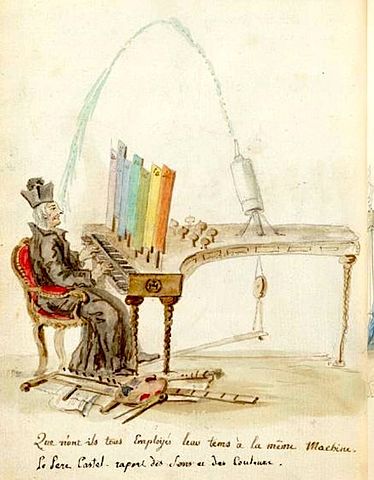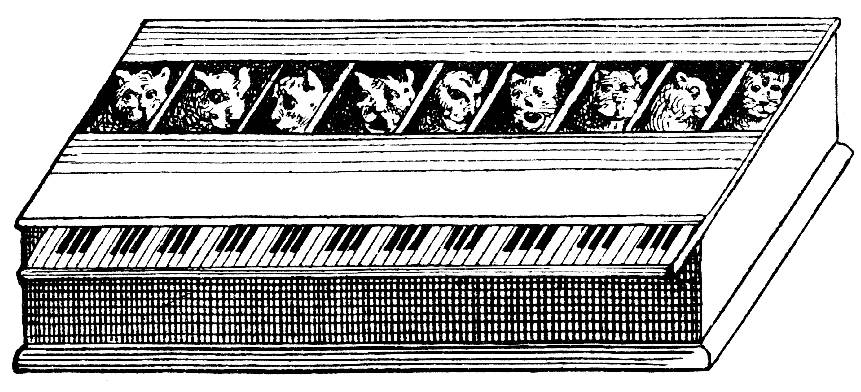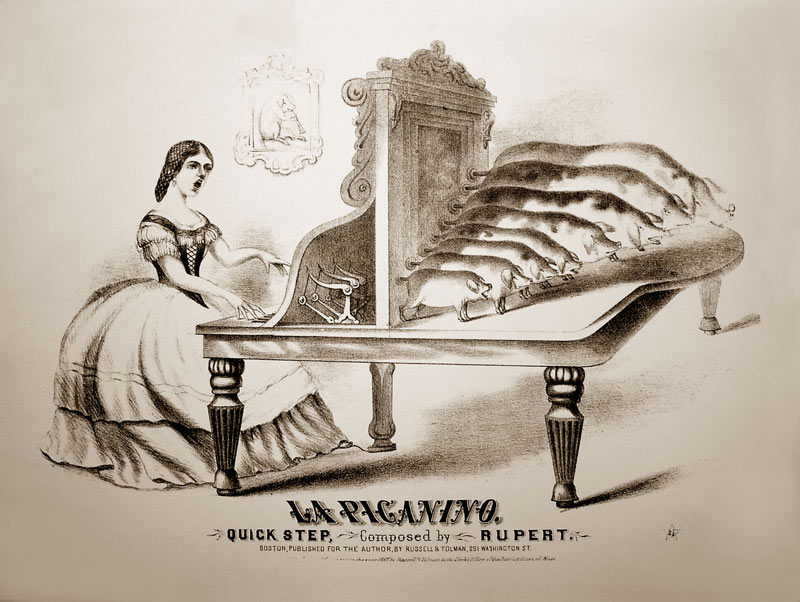
Inspired by Isaac Newton’s theory that the seven notes of the diatonic scale were related to the colors of the spectrum, French mathematician Louis Bertrand Castel in 1725 invented an “ocular harpsichord” outfitted with lanterns so that “the pressing of the keys would bring out the colours with their combinations and their chords; in one word, with all their harmony, which would correspond exactly to that of any kind of music.” Voltaire devoted Chapter 14 of his Eléments de la philosophie de Newton to the the theory and to Castel’s instrument, and Telemann composed several pieces for it.
The Great Stalacpipe Organ in Luray Caverns, Virginia, produces its tones by striking stalactites with rubber mallets. Leland W. Sprinkle spent three years in the 1950s identifying promising stalactites, shaving them to pitch, and wiring solenoids to trigger the mallets. The tones can be heard throughout the cavern even without amplification, but a loudspeaker system is normallly used.

I think I’ve written elsewhere about the Katzenklavier, a thankfully imaginary instrument first described by Athanasius Kircher in 1650. In the words of one writer, “if a key was pressed on the keyboard, the corresponding tail would be pulled hard, and it would produce each time a lamentable meow.”

Allegedly Louis XI of France challenged Abbé de Baigne to do the same thing with pigs to produce a “piganino”:
That brutal monarch, Louis XI of France, is said to have constructed, with the assistance of the Abbé de Baigne, an instrument designated a ‘pig organ,’ for the production of natural sounds. The master of the royal music, having made a very large and varied assortment of swine, embracing specimens of all breeds and ages, these were carefully voiced, and placed in order, according to their several tones and semitones, and so arranged that a key-board communicated with them, severally and individually, by means of rods ending in sharp spikes. In this way a player, by touching any note, could instantly sound a corresponding note in nature, and was enabled to produce at will either natural melody or harmony!
“The result is said to have been striking, but not very grateful to human ears.”
After our civilization has destroyed itself, the Adriatic will still be playing harmonies on the “sea organ” in Zadar, Croatia. Wind and waves interact with a system of polyethylene tubes to produce sound in a resonating cavity. In 2006 architect Nikola Bašic received the European Prize for Urban Public Space for the project, voted the best among 207 candidate projects from across Europe.
12/17/2016 UPDATE: I completely forgot the mouse organ! (Thanks, Gavin.)
